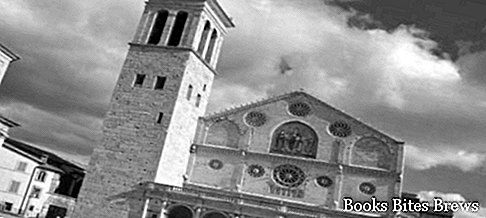What to see in Spoleto, one-day itinerary including the main monuments and places of interest, including Rocca Albornoziana and Santa Maria Assunta Cathedral.
Tourist information
Located in the province of Perugia on Colle Sant’Elia, Spoleto was an important center inhabited by the Umbrians since the seventh century BC.
Later it became a thriving Roman colony and with the invasion of the Lombards it was the capital of a vast duchy.
The Franks of the Carolingian Empire followed the Lombards.
The Duke of Spoleto Guido III, emperor of the Holy Roman Empire who had his son Lamberto as successor, was related to this dynasty.
In 1155 the city was destroyed by Federico Barbarossa and in 1198, with Pope Innocent III, it fell under papal rule, remaining there until annexation to the Kingdom of Italy.
The Roman era is testified by various monuments present in the urban fabric or by the remains of them incorporated in subsequent structures.
The Sanguinary bridge, the Arch of Drusus and the remains of a Roman house date back to the Augustan age, while the Theater, the Amphitheater and a Temple from the early centuries of the Empire are recognizable in the crypt of the Church of Sant'Ansano.
On the initiative of the Lombard dukes, the Church of San Salvatore was renovated in the eighth century, dating back to the period between the fourth and fifth centuries, a tangible sign of the spread of Christianity and one of the main architectural testimonies of the Langobardia Minor.
What see
The Basilica of San Pietro extra moenia dates back to the fifth century and was built by the Spoleto bishop Achilleo as a cemetery for bishops.
The basilica has undergone numerous structural interventions over the centuries.
Recommended readings- Umbria: Sunday day trips
- Gualdo Tadino (Umbria): what to see
- Ferentillo (Umbria): what to see
- Orvieto (Umbria): what to see
- Castiglione del Lago (Umbria): what to see
During the decay phase of the duchy, Romanesque architecture began to flourish, well represented by the Church of Sant'Eufemia, dating back to the tenth century and rebuilt within the first half of the twelfth century, by the Church of San Gregorio Maggiore, which was built in 1079 and modified over the centuries it has maintained its original structure, from the Church of Santi Giovanni e Paolo, a small place of worship consecrated in 1174, where the current crypt corresponds to a pre-existing church, built on a Roman building.
The Cathedral of Santa Maria Assunta, a 12th century Romanesque building built on the site of the ancient Cathedral destroyed in 1155 by Federico Barbarossa, was finished at the end of the thirteenth century.
Noteworthy are the frescoes by Pinturicchio in the Eroli chapel and by Filippo Lippi in the apse of the central nave.
The artistic history of Spoleto continues and manifests itself with various works, such as the Church of San Domenico, in Gothic style, the Rocca Albornoziana, one of the symbolic monuments of the city, built in the fourteenth century, then enlarged and embellished in the fifteenth.
The Caio Melisso Theater, of seventeenth-century origin, abandoned after the inauguration of the Nuovo and subsequently reopened.
The New Gian Carlo Menotti Theater was built in the second half of the nineteenth century.
In the twentieth century the two theaters became famous thanks to the Festival dei Due Mondi, better known as the Spoleto festival, an international event of music, art, culture and entertainment that takes place every year in the city of Spoleto, an important cultural event in the Umbria region.




